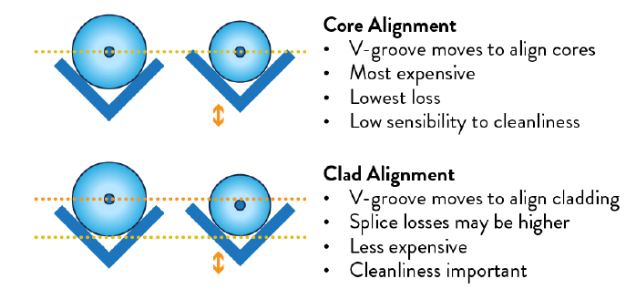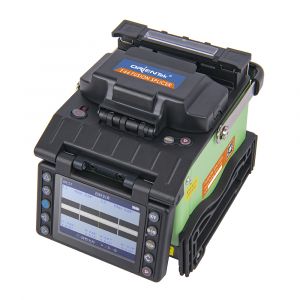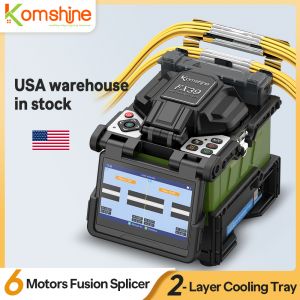When it comes to fusion splicing, two common alignment methods are core alignment and cladding alignment. These techniques play a crucial role in ensuring efficient and reliable fiber optic connections. In this post, we will explore the differences between core alignment and cladding alignment, along with their respective fusion splicing processes.

- Core Alignment: Core alignment is a precise fusion splicing technique that aligns the cores of two optical fibers. Here's how it works:
- Fiber Alignment: In core alignment, the fusion splicer uses advanced imaging technology to accurately align the fiber cores. This ensures minimal signal loss and maximizes the performance of the spliced connection.
- Signal Optimization: Core alignment fusion splicers can adjust the position and angle of the fibers to optimize the signal transmission. This technique is particularly useful for single-mode fibers that require precise alignment for optimal performance.
- High Accuracy: Core alignment fusion splicers offer high alignment accuracy, typically within a few micrometers. This level of precision ensures low insertion loss and high return loss in the spliced fibers.
- Suitable for Various Fiber Types: Core alignment fusion splicers are versatile and can be used for both single-mode and multimode fibers, making them a preferred choice for various applications.
- Cladding Alignment: Cladding alignment is another fusion splicing technique that aligns the cladding layers of two optical fibers. Let's delve into the details:
- Fiber Alignment: In cladding alignment, the fusion splicer aligns the cladding layers of the fibers instead of the cores. This technique relies on the assumption that if the cladding layers are aligned correctly, the cores will also be aligned.
- Simplicity and Speed: Cladding alignment fusion splicers are generally faster and simpler to operate compared to core alignment splicers. They are suitable for applications where a high level of precision is not essential.
- Cost-Effective: Cladding alignment fusion splicers are typically more affordable than core alignment splicers, making them a cost-effective choice for certain projects.
- Multimode Fiber Compatibility: Cladding alignment fusion splicers are commonly used for multimode fibers, where the alignment requirements are less stringent compared to single-mode fibers.
Conclusion: Both core alignment and cladding alignment fusion splicers offer unique advantages depending on the specific requirements of a project. Core alignment fusion splicers are ideal for applications that demand high precision and low signal loss, especially for single-mode fibers. On the other hand, cladding alignment fusion splicers provide a cost-effective solution for projects involving multimode fibers, where precision alignment is less critical.
Understanding the differences between core alignment and cladding alignment fusion splicers empowers network technicians to choose the most suitable technique for their specific needs. Whether it's achieving optimal performance or optimizing costs, fusion splicing technology continues to evolve, providing efficient solutions for seamless fiber optic connections.
Morde details please send the MODEL name and your purchasing quantity to our email box sales@thefo.com or whatsapp/skype:+86 13625297051





